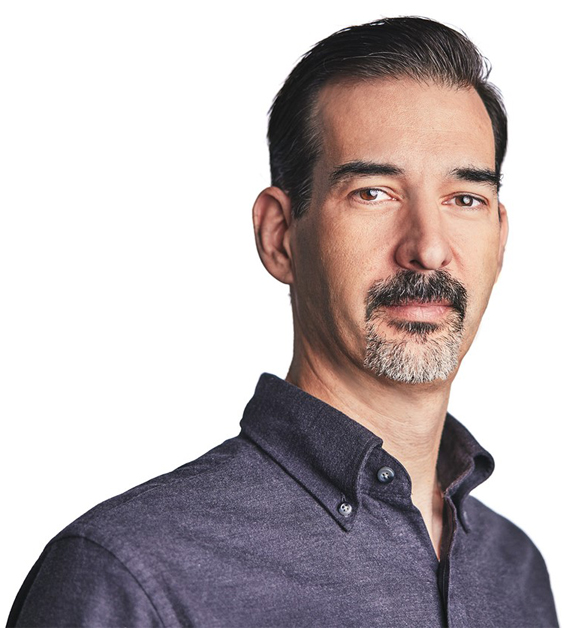Revolutionizing Proteomics in the Age of Digital Innovation
April 17, 2024 • Todd Rearick

By Todd Rearick
Almost 29 years ago I started my engineering career working in a US Navy research laboratory in New London, Connecticut. In that role, I worked as part of a team that created a modern digital replacement for an aging analog sonar system. From that humble beginning until now, I’ve witnessed time and again the remarkable transformation that comes with the adoption of modern technology.
This transformation has reshaped almost every industry and touched all our lives. It’s taken us from vinyl records to music streaming, from film photography to digital cameras, and from “Ma Bell” to cellphones and the internet, and the intervening years have taken me from my work with sonar to my current role as the Chief Technology Officer at Quantum-Si.
I find myself yet again working on a digital transformation, this time in the world of proteomics, where I know our work can have a huge positive impact and improve the lives of those around us.
A good example of a relatively recent digital transformation is the development of Next Generation Sequencing (NGS) for DNA and RNA analysis. Sequencing technologies are inherently digital in nature. In them, we are detecting the fundamental building blocks of larger biomolecules one-by-one, and counting reads, mutations, and variants.
Scientists embraced this digital view of DNA and RNA, and the result was a massive advancement in our understanding of molecular biology and our ability to both ask and answer complex questions. How different would our view of the COVID-19 pandemic have been without modern genomic sequencing? We were able to track mutations in real time as they developed and spread throughout the population.
We monitored wastewater systems to detect outbreaks, and we developed new vaccines in record time. However, while Next Generation Sequencing (NGS) ushered genomic analysis into the digital realm, the field of proteomics has remained entrenched in analog methodologies, relying on assays like ELISA and western blots or mass spectrometry.
Why has protein science remained so stubbornly analog? Well, for one thing, protein sequencing is very hard! Proteins are much more chemically diverse than DNA, and there is no obvious method to copy or amplify proteins or peptides. For proteins, we have 20 different amino acids to detect, in addition to many post-translational modifications (PTMs). This is much more challenging than the four nucleotides in DNA sequencing. Fortunately, at Quantum-Si we just so happen to have one of the most diverse, talented, and dedicated teams I have ever worked with.
Undaunted by these challenges, we embarked on a mission to transform proteomics with the world’s first and only Next-Generation Protein Sequencer™, Platinum®. Our protein sequencing technology enables the interrogation of single molecules of protein, breaking them down into peptide fragments and sequentially detecting individual amino acids.
This approach fundamentally digitizes samples, offering a new level of insight. Just as digital technology revolutionized music and photography, our aim is to revolutionize proteomics, providing another step-change for researchers, empowering them once again to ask and answer new questions.
Early adopters at leading labs across the country are already leveraging our Next-Generation Protein Sequencing™ (NGPS) technology. Our system is designed to be approachable and user-friendly, eliminating the need for extensive training and expertise. Whether you’re a small lab with limited resources or a large research institution, NGPS on Platinum is accessible and straightforward to implement.
As we witness the faster-paced evolution of digital proteomics, akin to the transition witnessed in genomic sequencing, I am confident that our technology will become an indispensable tool in unraveling the complexities of the proteome and ultimately advancing human health.

Todd Rearick – Chief Technology Officer (Bio)
Todd Rearick has served as Quantum-Si’s Chief Technology Officer since January 2019. Prior to that Mr. Rearick served as Chief Technology Officer at Hyperfine Research from January 2018 to January 2019, and as Systems Engineer from June 2014 to January 2018. Prior to that Mr. Rearick was an Engineering Fellow at Life Technologies from October 2010 to June 2014, and Principal Engineer for Ion Torrent from May 2008 to October 2010.
Prior to that Mr. Rearick was a Software Manager at Raindance Technologies from June 2006 to May 2008, and held several positions at Sycamore Networks, a telecommunications equipment manufacturer, from April 1999 to June 2006. Mr. Rearick started his career with the Naval Undersea Warfare Center (NUWC) in New London, Connecticut from 1995 to 1998. Mr. Rearick earned his B.S. in Engineering Science from Penn State University.